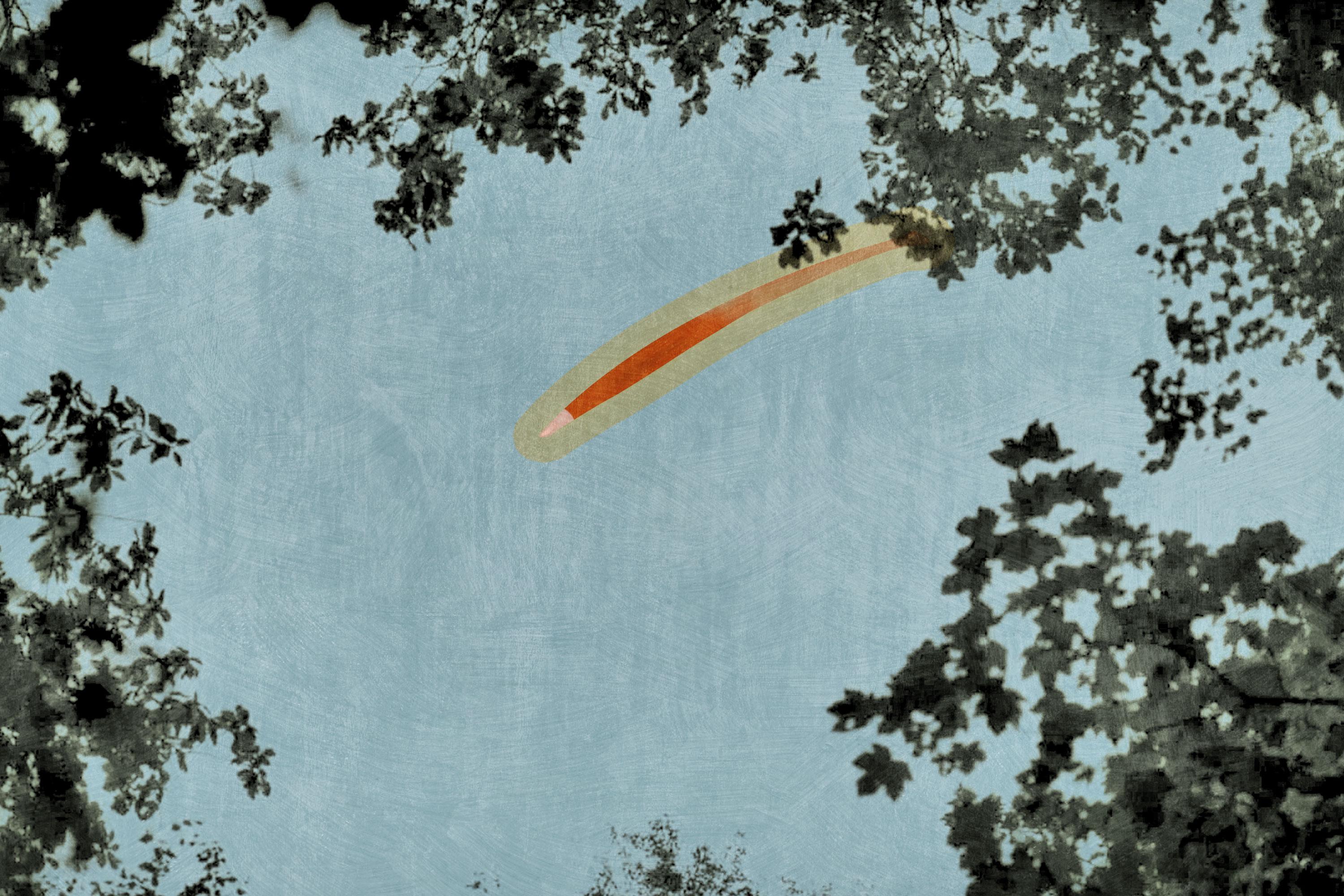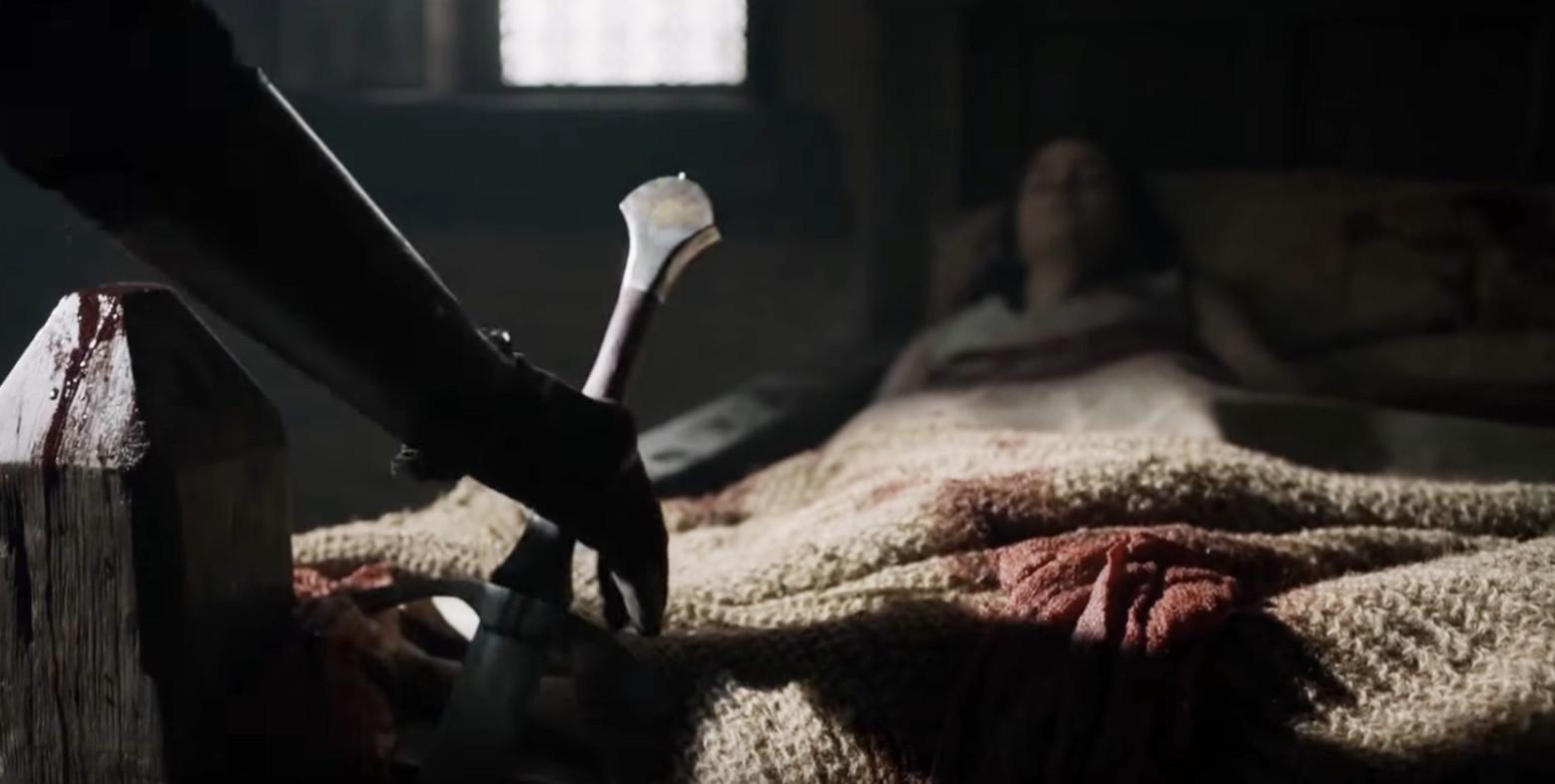‘Game of Thrones’ Loose Ends: Does That Mysterious Red Comet Herald the Prince That Was Promised?
Season 2’s fiery phenomenon spread theories across the internet as it streaked across the sky. We still don’t know what it means—but nearly every character had a guess.
In 25 days, Game of Thrones will finally return. And 35 days after that, Thrones will end. In less time than it seemingly takes Littlefinger to zip around to every corner of Westeros, showrunners David Benioff and D.B. Weiss will deliver a conclusion to the story George R.R. Martin first introduced 23 years ago—and in that precious time they’ll have to answer half a hundred pressing questions: Who will live? Who will die? Who will tell Jon he’s doing it with his aunt?
Separate from those series-shaping questions are countless smaller but still crucial details that the show may or may not explore in the final season. These are Thrones’ loose ends: the characters, places, events, prophecies and more that the story has made audiences wonder about over the past seven seasons but has yet to satisfyingly wrap up. In the run-up to the final season’s April 14 premiere, we’ll be digging through these loose ends, looking at why they matter and how they could affect the endgame as we count down the days to Thrones’ long-awaited conclusion.
The Loose End
In the Season 2 premiere, a red comet streaks across the skies above Westeros and Essos. On Earth, with our telescopes and satellites and 21st-century understanding of space, we’d understand that this is a normal cosmological phenomenon—it’s just a rock stopping by the solar system for a visit. But in the Thrones universe, no such understanding exists, and many of the characters believe the fiery display to be a supernatural symbol that carries an omen or prophecy. In the show, Bran and Osha share some of the rumors they’ve heard about the comet:
Bran (look how young he is in Season 2!) tells Osha that he’s heard men talking about the comet. They think the star confirms that Robb will triumph in the South. But Osha has heard different rumors: The comet is Lannister crimson, signaling that the Lannisters will soon rule all Seven Kingdoms. Others think it’s just the color of blood, and represents the death of Ned Stark.
Osha doesn’t buy any of those rumors, though. “Stars don’t fall for men,” she tells Bran. “A red comet means one thing, boy: dragons.”
“The dragons are all dead,” Bran responds matter-of-factly. “Been dead for centuries.”
Cut to … dragons, and Daenerys’s khalasar in the Red Waste, where the comet is also visible. It’s a heavy-handed hint that Osha’s interpretation is correct; indeed, Robb would soon lose his war and the Lannisters have never controlled all of Westeros. But is the truth as simple as comet = dragons? In the show, perhaps it is—but the books paint a more complicated picture.
When the comet emerges, much is happening across the Thrones universe. In addition to dragons having just been born for the first time in more than 150 years, Joffrey has recently been crowned king, war threatens to break out after nearly two decades of peace, summer is ending, and the threat the White Walkers pose is just becoming clear. As all of this is unfolding, nearly every character in the books posits a theory for the comet. Let’s run through them:
Khal Drogo’s Ascension to the Night Lands
Daenerys and her khalasar first spot the comet before lighting Drogo’s funeral pyre. Dothraki custom holds that when a khal’s body is burned, he rises into the night lands and takes his place among the stars. “The more fiercely the man burned in life, the brighter his star will shine in the darkness,” Daenerys says.
In the final chapter of A Game of Thrones, Daenerys stands ready to light Drogo’s funeral pyre and step into the flames herself. That’s when she spots the red comet burning in the sky—she takes it as a strong sign for her late husband and lights the pyre.
The Murder of Melisandre
A maester named Cressen is the point-of-view character for the prologue of A Clash of Kings. He’s the maester on Dragonstone, serving Stannis Baratheon, and is deeply skeptical of Melisandre and her faith in the Lord of Light. Cressen plots to poison Melisandre’s wine before she can continue to corrupt the king, and he believes the star is for him, foretelling the success of his scheme.
When Melisandre drinks the poisoned wine, though, she is unharmed. She makes Cressen take a sip, and he dies. Safe to say, Cressen was very wrong about the comet.
The Night’s Watch’s Path North
As they head beyond the Wall, the men of the Night’s Watch dub the comet “Mormont’s Torch” after their Lord Commander. The men believe “only half in jest” that the comet was sent to help guide them through the haunted forest.
Glory to King Joffrey
Not only has Joffrey recently been named king, but when Clash opens it is also his name day. One of the knights of the Kingsguard tells Sansa that the comet represents glory to Joffrey, and some of the smallfolk call the star “King Joffrey’s comet.”
“This comet is sent to herald Joffrey’s ascent to the throne, I have no doubt,” the knight tells Sansa. “It means that he will triumph over his enemies.”
The knight also notes that the comet is crimson, the color of House Lannister. Yet that brings more questions: Sansa notes that Joffrey is a Baratheon, not a Lannister. If the comet were for him, surely it would shine golden, not red.
The Coming of Autumn
A septon in Winterfell tells Bran that the red comet signals the end of summer and the arrival of autumn. “Doubtless he was right,” thinks Bran when a raven from the Citadel arrives to officially ring in the new season. But since autumn had begun to arrive as early as A Game of Thrones, this prediction feels a bit like cheating.
Dragons
Old Nan has a different theory for Bran. Though she is nearly blind and cannot see the comet, Old Nan tells Bran that she can smell it (essentially setting up a Westerosi version of a Futurama joke), and that the comet can mean only one thing: dragons.
Nan doesn’t appear in Season 2 of the show, with this dialogue given to Osha instead.
There are other characters who theorize that the star relates to dragons, as well. Daenerys thinks that it looks like a dragon’s tail when she first spots it in the sky, and some servants in King’s Landing begin calling it “the Dragon’s Tail.” On Dragonstone, some servants overhear Melisandre calling it “dragonsbreath.” Shireen is fascinated by this: “If the dragons are breathing, doesn’t that mean they are coming to life?” she wonders.
Also supporting the dragons theory: When Maester Aemon lies dying in A Feast for Crows, he dreams of dragons and “a red star bleeding in the sky.” Though reports of Dany’s dragons have already made their way to Aemon at that point, the way his mind connects the dragons with the “red star” is another sign that the two are related.
Vengeance for Ned
In the books, it’s the Greatjon Umber who posits that the comet is related to Ned’s death. Arya also considers the same thing, thinking that the comet—which Gendry calls “the red sword”—looks like the Stark greatsword, Ice, after Ilyn Payne beheaded Ned with it.
Tully Victory
Edmure thinks the comet represents the Tully colors—red against blue—and is a good sign for his house. But as Brynden the Blackfish notes, the Tully red is more of a mud red—the color of a riverbed. The comet is a brighter shade than that.
Lannister Victory
Catelyn dismisses the idea that the comet is about Ned or her former house. She thinks the comet matches the crimson of House Lannister, echoing what Osha says in the show.
War
The Blackfish, always the optimist, says that the comet is simply the color of blood, smeared across the sky. In King’s Landing, Varys reports that many smallfolk call the comet “the Red Messenger,” foretelling the coming conflict. Osha tells Bran it means “blood and fire, boy, and nothing sweet” in the books.
Greyjoy Victory
It shouldn’t be surprising that a narcissist like Theon Greyjoy thinks the comet is for him. Theon reflects on the comet as he is sailing to Pyke to try to win his father over to Robb’s cause, believing it symbolizes a new chapter in his life.
When Theon lands, his uncle, the priest Aeron Damphair, tells him that the comet is actually a message from the Drowned God. “A burning brand it is,” Aeron remarks. “Such as our people carried of old. … It is time to hoist our sails and go forth into the world with fire and sword, as [the Drowned God] did.”
“I could not agree more,” Theon responds, smiling. Given what would soon happen to Theon, the Iron Islanders, and Balon, it’s safe to say that the red comet wasn’t a message from the Drowned God.
Daenerys’s Path to Qarth
After Dany becomes the Mother of Dragons, she no longer believes the star is only for her husband’s ascent to the heavens. “It is the herald of my coming,” she reflects in Clash. “... The gods have sent it to show me the way.”
In the show, Dany and her khalasar venture into the Red Waste because Jorah insists it is the only direction they can head where someone won’t steal Dany’s dragons. But in the books the comet plays a major role. Even as Dany’s handmaidens warn her that death lies in the red lands, the Khaleesi is insistent—they must follow the comet. And to Dany’s credit, they do eventually wind up in Qarth. It could have gone much worse.
Later, the warlock Pyat Pree tells Dany that he sent the comet to guide her path. “We knew you were to come to us,” he tells her. “A thousand years ago we knew, and have been waiting all this time. We sent the comet to show you the way.”
Drogon burns Pree alive in the show (in the books, Drogon burns some other warlocks, but not Pree). The Undying Ones may have some magical abilities, but it seems unlikely that summoning a comet falls in their repertoire.
Azor Ahai Reborn
Part of the Azor Ahai prophecy is the prince that was promised will be reborn when “the red star bleeds,” as Melisandre tells it. As such, Melisandre and her followers on Dragonstone believe that the red comet confirms Stannis’s place as Azor Ahai reborn. “You are he who must stand against the Other,” Melisandre tell Stannis in Storm. “The one whose coming was prophesied 5,000 years ago. The red comet was your herald. You are the prince that was promised, and if you fail the world fails with you.”
Given that Stannis is now dead in the show, we know that he wasn’t Azor Ahai reborn. But could the comet still have heralded the coming of the prince that was promised?
Why This Loose End Matters
George R.R. Martin may have placed the comet in the books to reveal how characters in the Thrones universe can interpret an event in wildly different ways. The comet reveals much about how different characters view their journey: Some see the celestial symbol and believe they are destined for greatness, while others spot it and are consumed by fear. With that in mind, it’s possible that the comet is just a storytelling device for Martin, and is nothing more than a rock drifting through space.
But the Azor Ahai prophecy leaves room for doubt. The prince that was promised is supposed to be born amid salt and smoke, and underneath a bleeding star. Is that really just a coincidence? Understanding who the hero is may begin with understanding what was up with that comet.
How Season 8 Could Address It
In 2013, Martin joked that he could end the series by having the comet hit Westeros and wipe out all life. That feels unlikely—but the comet could be revisited as part of the Azor Ahai prophecy.
We still don’t know who the prince that was promised is (or if it is anyone at all), but one of the most viable candidates is Daenerys Targaryen. Dany was born during an incredible storm (hence why she often calls herself “Daenerys Stormborn”). The seawater crashing into Dragonstone during the time of her birth may be the salt from the prophecy, while Drogo’s funeral pyre—the site of Dany’s re-birth as the Mother of Dragons—could be the smoke. If the red comet that appeared just before she lit the flame is Dany’s herald, then the Khaleesi could add another title (title) to her list of names—the prince that was promised. (As Missandei, Melisandre, and Dany discuss in Season 7, “prince” is gender-neutral in High Valyrian, where the prophecy comes from.)
The other most viable candidate to be the prince that was promised is Jon Snow. As the son of Lyanna Stark and Rhaegar Targaryen, he is the literal song of ice and fire, the true heir to the Iron Throne, and a born leader who has been resurrected. Yet when the comet appeared above Westeros, Jon wasn’t emerging unburnt from a funeral pyre. He was simply journeying north with the rest of his brothers. But the prophecy doesn’t call for a red comet, it calls for a bleeding star.
In the Tower of Joy flashbacks in Season 6, Bran watches as his father, Ned, does battle with Ser Arthur Dayne. Particularly skilled Daynes earn the title the Sword of the Morning, and they wield House Dayne’s ancestral sword, Dawn. Unlike so many other family swords in Westeros, Dawn isn’t made of Valyrian steel—legend states that it was forged from the heart of a meteor that fell to Westeros thousands of years ago. Arthur Dayne wields Dawn, and after Howland Reed stabs Ser Arthur in the back, Ned grabs the sword, now covered in blood, and takes it with him into the Tower of Joy. As he goes to meet Lyanna, the camera lingers on a shot of him placing Dawn at the foot of her bed:

A sword that is made from a meteor and is covered in blood is arguably closer to a “bleeding star” than a red comet, but where is the salt and smoke? Lyanna’s tears could be the salt, and Melisandre often represents fire. Her ritual to bring Jon back from the dead could be the smoke.
Yet in the cases for both Jon and Dany, that’s a lot of ifs and mays and coulds, as Bronn would say. Heading into Season 8, the prince that was promised, if there even is one, is still unknown. It may be that the red comet in Season 2 is crucial in pointing out who that person is. But like the characters in Westeros, we should be wary of reading too much into it.
Disclosure: HBO is an initial investor in The Ringer.

